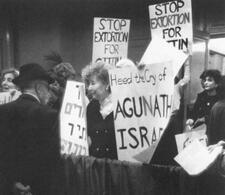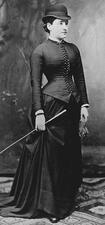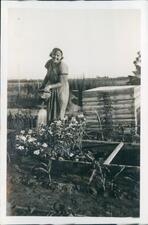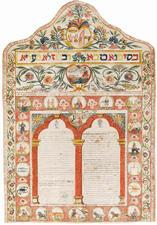Family: Marriage
Imma Shalom
Infertile Wife in Rabbinic Judaism
Only men are legally obligated to procreate, but there is disagreement over whether that obligation compels a man to divorce his wife after ten childless years. The initial infertility of the matriarchs reinforces the efficacy of prayer by demonstrating that the individual matriarchs’ suffering and supplications are what provoked a divine response.

Jewish Women and Intermarriage in the United States
Marriages between Jews and people of other faiths have long fascinated scholars, clergy, and communal leaders, who often considered the choice of a Jewish spouse as an indication of the strength of ethnoreligious identity and commitment to perpetuating Judaism and the Jewish people. However, many Jewish women who intermarry in the United States continue to identify Jewishly, engage in the Jewish community, and raise Jewish children.
This entry uses gender as category of analysis and change over time to illuminate the experience and meaning of interfaith marriage for Jewish women in America. It describes how women navigated their ethnoreligious identities when they married Gentile men, the influences of feminism, the rise of ethnic consciousness, and parenthood.

International Coalition for Agunah Rights (ICAR)
International Coalition for Agunah Rights (ICAR) was created to solve the problem of women whose husbands refuse to grant them Jewish divorces, through a combination of education and activism. Although some of the member organizations remain active in North America, ICAR itself has become a primarily Israel-focused coalition.
Iraqi Jewish Women

Early Modern Italy
A study of the role of Jewish women in household formation, the household, and household dissolution, as well as their engagement in Jewish culture in early modern Italy, raises the question of how much of Jewish practice reflected the context of the surrounding society and how much engaged options in traditional Jewish practices, which were selected to meet their own needs. Despite the wealth of information about some well- known women and reports of the activities of many unnamed women, Jewish women, like Christian women, still functioned in the context of women and the period does not represent a Renaissance for women.
The Jewish Family in Early Twentieth-Century United States
Jewish Migrations to the United States in the Late Twentieth Century

Jochebed: Midrash and Aggadah
The midrash portrays Jochebed as a wise woman who was righteous and God-fearing. By merit of her good deeds, she gave birth to the three leaders of the Exodus generation: Moses, Aaron, and Miriam.

Juedischer Frauenbund (The League of Jewish Women)
Founded in 1904, The League of Jewish Women pursued secular German feminist goals while maintaining a strong sense of Jewish identity. The League supported vulnerable women through practical social reforms while fighting for political power within the German Jewish community. It saw employment opportunities as essential to women’s economic, psychological, and emotional independence.

Esther Jungreis
Karaite Women
Family law and personal status of women are important aspects of both the daily life and the halakhah of Karaite communities. Karaite legal sources often deal with rules pertaining to betrothal, marriage, divorce, ritual purity, and incest.

Keturah: Bible
The marriage of Abraham to Keturah represents a secondary union, one that separates the procreation of offspring from the inheritance of immovable property (land), which in this case goes only to Abraham’s primary heir, Isaac—not to Keturah’s six children.

Keturah: Midrash and Aggadah
Keturah was one of Abraham’s wives. The Rabbis describe her as a woman of virtue, for which she was worthy of being joined to Abraham.

Kibbutz Ha-Dati Movement (1929-1948)
Beginning in 1929, the religious kibbutz (Kibbutz Ha-Dati) movement represented the confluence of progressive ideals of equality and collectivism and traditional customs of Judaism. As a result, women in the movement lived at a crossroads.
Killer Wife in Jewish Law and Lore
The Talmud states that if a woman is twice or thrice widowed, she is prohibited from remarrying because it is presumed that she is a killer wife and that her next husband will also die. This has been applied in post-Talmudic law, but also negated by some halakhic decisors.

Francine Klagsbrun

Idit Klein
Rabbi Abraham Isaac Kook
Kurdish Women
Jews lived in Kurdistan for 2,800 years, until a mass migration to Israel in the 1950s. This Jewish community’s ancient roots and relative seclusion in the Kurdistan region fostered unique religious, cultural, and linguistic characteristics. Despite assimilation and the loss of traditional practices, the community remained tight-knit.

Leah: Bible
Leah is the sister of Rachel, and many of the stories about her center around her turbulent relationship with her sister, as they are both Jacob’s wives. Jacob clearly prefers Rachel, and the sisters repeatedly compete with each other for Jacob’s affection. Leah and Rachel are remembered as the ancestresses “who built up the house of Israel” (Ruth 4:11).

Leah: Midrash and Aggadah
Leah is the sister of Rachel and the wife of Jacob. God blesses Leah with children; she has six sons and one daughter, and two of her sons become ancestors of two of the twelve tribes. She may not have been Jacob’s preferred bride, but she is interpreted as extremely selfless and generous.
Legal-Religious Status of the Female According to Age
Legal status in Judaism is determined by age, sex, legal capacity, and, to some extent, by class and societal status. Legal majority in Jewish law was achieved relatively early in comparison to contemporary standards.

Legal-Religious Status of the Married Woman
Rabbinic law defines the criteria and requirements for traditional marriage, marital rights, and divorce. However, the rabbinic marital system poses many problematic issues for women, especially for agunot, women trapped against their will in marriages by their husbands.
Legal-Religious Status of the Moredet (Rebellious Wife)
A woman who is deemed a moredet is severely disadvantaged in her legal standing. There are various ways in which a women is considered a moredet, and all legal processes dealing with rebellious wives put women at a legal disadvantage.


